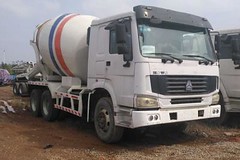
- Read An Opinion On:
- Lw Hydraulics
Rice is mostly consumed in the Asian regions from Japan in the east to Pakistan in the west and is the 2nd most vital crop cereal after maize or corn. As per our study, it is expected that the rice market’s growth will surge during the forecast period since it’s also been cultivated among the non-consuming region such as North America. Across the globe, Rice species and its varieties have a name given by its origin name say Oryza sativa also called Asian rice and Oryza glaberrima or African rice, Japonica rice, Indica rice varieties. As per Renub Research report, Global Rice Market will be a USD 274 Billion opportunity by the end of the year 2027.
Besides, rice is a staple diet in various developed and developing countries. Thus it is considered a strategic commodity and remains subject to a wide range of government controls and interventions. On this contrary, Rice also plays a pivotal role as a wage commodity for the workers in the non-agriculture sectors and cash crop.
Despite current pandemic, COVID – 19 has not much impacted the rice market globally than other industries as its demand has been increasing. The driving factors that boost the global rice market are support from Government and other Associations in developing nations, advancement in technology, and demand for higher quality rice from gulf countries during festive seasons.
Renub Research report titled “Global Rice Market & Volume by Consumption (China, India, Bangladesh, Indonesia, Viet Nam, Philippines, Thailand, Myanmar, Japan, Brazil, Others), Production (China, India, Bangladesh, Indonesia, Viet Nam, Philippines, Thailand, Myanmar, Japan, Pakistan, Others), Imports (Philippines, EU-27, China, Nigeria, Cte D’ivoire, Saudi Arabia, United Arab Emirates, Iran, Iraq, Senegal), Exports (India, Thailand, Viet Nam, Pakistan, United States, China, Myanmar, Cambodia, Uruguay, Paraguay), Company Analysis (KRBL Limited, EBRO Foods Inc., LT Food Limited, Kohinoor Foods Ltd, Grmrice)” provides a comprehensive analysis on global rice industry.
Request a Free Sample Copy of the Report:
Consuming Countries – Market & Volume breakup 11 countries
1. China2. India3. Bangladesh4. Indonesia5. Viet Nam6. Philippines7. Thailand8. Myanmar9. Japan10. Brazil11. Others
Producing Countries – Volume breakup 11 countries
1. China2. India3. Bangladesh4. Indonesia5. Viet Nam6. Thailand7. Myanmar8. Philippines9. Japan10. Pakistan11. Other
Exporting Countries – Volume breakup 10 countries
1. India2. Thailand3. Viet Nam4. Pakistan5. United States6. China7. Myanmar8. Cambodia9. Uruguay10. Paraguay
Import Countries – Volume breakup 10 countries
1. Philippines2. EU-273. China4. Nigeria5. Cte D’ivoire6. Saudi Arabia7. United Arab Emirates8. Iran9. Iraq10. Senegal
All key players were covered with 3 viewpoints
• Overviews• Recent Developments• Revenues
Key Players Analysis
1. KRBL Limited2. EBRO Foods Inc.3. LT Food Limited4. Kohinoor Foods Ltd5. Grmrice
About the Company:
Renub Research is a Market Research and Consulting Company. We have more than 10 years of experience especially in international Business-to-Business Researches, Surveys and Consulting. We provide a wide range of business research solutions that helps companies in making better business decisions.
Contact Us:Renub ResearchPhone No: +1 678-302-0700 (USA) | +91-120-421-9822 (IND)Email: info@renub.comWeb: https://www.renub.comFollow on Linkedin: